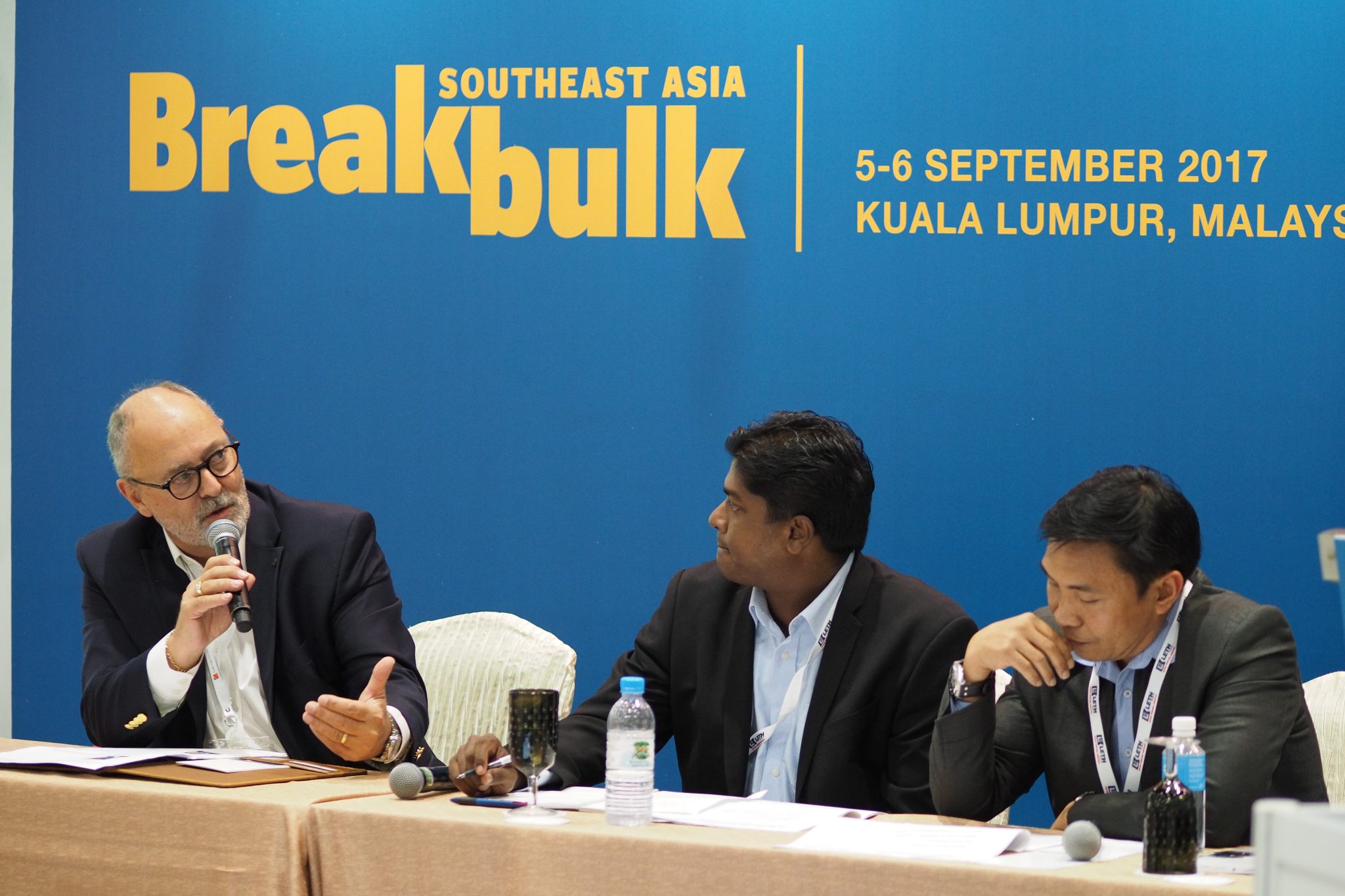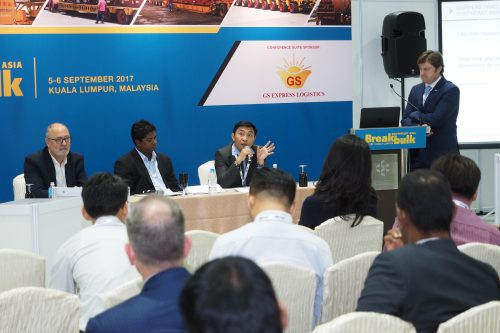
Despite significant growth among Association of Southeast Asian Nations countries, the ASEAN region still faces significant challenges in securing and maintaining services for its manufacturers and engineering, procurement and construction service companies.
While the ASEAN region is a comparatively burgeoning region for the project industry, compared to the overall global downturn, its nations are still served largely on a transshipment basis, and its cargo owners must entice carriers to consistently serve the market.
“The Asia-Pacific is a complex geography. By default, ASEAN nations are really connected to the rest of the world through transshipment. That’s something we have to deal with all of the time,” said Pravin Rajakrishna, general manager, Asia Pacific transportation operations, Caterpillar, speaking at a shippers’ panel during Breakbulk Southeast Asia in Kuala Lampur, Malaysia.
Caterpillar has a decades-old history in the ASEAN region, Rajakrishna said. The manufacturer has a network of dealers in all 10 ASEAN countries, and manufacturing facilities in the region as well. There are also 200 component and after-market suppliers in the region, “servicing not just in Asia but around the world.”
With the global downturn, carriers have reduced their services and sailing frequencies and consolidated services, which for Caterpillar “means longer lead times to get to customers,” he said.

Fixing Infrastructure Challenges
Antonio C. Jataas, lead logistics coordinator, procurement department, JGC Philippines Inc., acknowledged the region’s “challenging infrastructure, which would benefit from government investment, though little can be done to compensation for a network of islands.
“With the downturn, it’s challenging for service providers at the same time as EPCs to negotiate,” he added.
Colin MacIsaac, global sales director, F.H. Bertling Logistics, who moderated the panel, said it’s a “difficult argument to make that the carriers are really supporting the ASEAN region.
“If there’s no cargo, there’s no carrier,” responded Peter Bouwhuis, president and CEO, XELLZ BV, and a former executive with ABB. “What we do see is carriers trying to find ways of including this region. That’s a good development.
“I know it’s going to delay some of the cargo, but it’s going to give so much more access to the other regions where we can really establish more growth,” he added.
For Caterpillar, Rajakrishna sees parallel development of networks intra-ASEAN and between the region and international markets.
“I’m seeing that with the growth and development in the ASEAN, there is clearly a part for carriers developing their networks. At the same time, we find machine sourcing changing from Europe to Asia,” he said. “We’re building more machines in Asia than we ever did before. And our machines are bigger. When I see that, I also see an improvement in networks from the U.S. and Europe to Asia as well.”
MacIsaac acknowledge the balancing act the region faces to maintain costs through negotiation on rates and services, but also providing the security of services from carriers. “The rates are obviously keeping carriers and logistics service providers from making the investments needed.”
Jataas said his company, which focuses on oil and gas, will trade volumes from other existing projects worldwide to provide competitive rates within the ASEAN region.
“We try, as a company, to do less squeezing,” Rajakrishna said of Caterpillar. “If anything, we want to derive the most value out of any partner we’re working with. So we do leverage a global procurement and global spend, that is definitely part of our processes.
“But I think predictability and reliability to customer, and meeting customer demand is important to us as well … making sure we’re able to deliver our machines timely and reliably to our customers makes a big difference.”
“If rates would be stable, if rates would be fair, service providers would come in and we’d have more choices,” Bouwhuis said. “Carriers are looking at all sorts of ways to get their rates more attractive to themselves … as well as their customers. And it’s understandable because everyone needs to save money at the moment.
“But you have to look at the cost aspect. It’s the end bill that’s important, not the price in the middle,” he added.
Photo: Peter Bouwhuis, of XELLZ BV, responds to a question while Pravin Rajakrishna of Caterpillar, and Antonio C. Jataas, JGC Philippines Inc., listen.
Source: www.breakbulk.com

